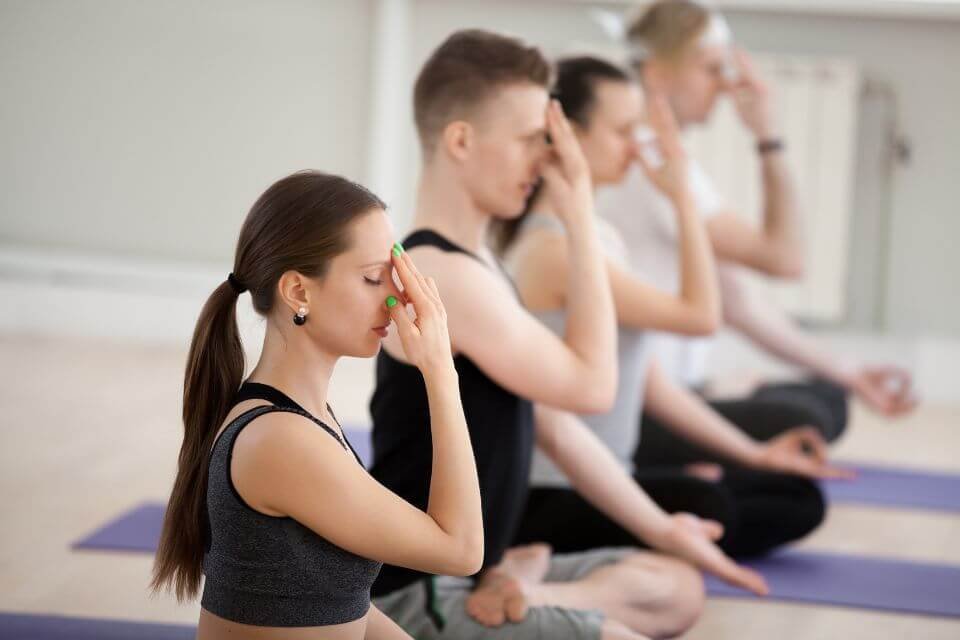Exploring Pranayama: The Ancient Art of Breath Control
Pranayama, often referred to as “Breathing Work,” is an ancient yogic practice that focuses on conscious control and manipulation of the breath. Rooted in the Sanskrit words “prana” (life force) and “ayama” (extension or control), pranayama is a powerful tool for balancing the mind, body, and spirit, and enhancing overall well-being.
Understanding Pranayama:
Pranayama techniques involve various breathing exercises and patterns designed to regulate the flow of prana, or vital energy, within the body. By harnessing the breath, practitioners can influence the flow of prana through the nadis, or energy channels, and awaken the body’s innate healing and transformative powers.
Key Principles of Pranayama:
- Conscious Breathing: Pranayama emphasizes conscious awareness of the breath, focusing on the inhalation, exhalation, and pauses in between. Through deliberate and mindful breathing, practitioners can regulate the rhythm and depth of the breath, promoting relaxation, clarity, and vitality.
- Breath Retention: Many pranayama techniques involve breath retention, or holding the breath in specific patterns. By practicing controlled breath retention, practitioners can enhance lung capacity, improve respiratory function, and increase oxygenation of the blood.
- Subtle Energy Manipulation: Pranayama is based on the concept of prana, or life force energy, which flows through the body’s subtle energy channels, known as nadis. By practicing pranayama, practitioners can influence the flow of prana, balance the energy centers (chakras), and awaken higher states of consciousness.
- Integration with Asana: Pranayama is often practiced in conjunction with yoga asana (postures), creating a holistic and integrated yoga practice. By combining breathwork with physical movement, practitioners can deepen their awareness, enhance their practice, and experience profound physical and mental benefits.
Benefits of Pranayama:
- Stress Reduction: Pranayama techniques help to calm the nervous system, reduce stress, and promote relaxation and emotional well-being. By regulating the breath, practitioners can activate the body’s relaxation response and cultivate a sense of inner peace and tranquility.
- Improved Respiratory Function: Pranayama strengthens the respiratory muscles, increases lung capacity, and improves respiratory efficiency. Regular practice of pranayama can alleviate respiratory conditions such as asthma, bronchitis, and allergies, and enhance overall lung health.
- Enhanced Mental Clarity: Pranayama enhances mental clarity, concentration, and focus by calming the mind and quieting mental chatter. By regulating the breath, practitioners can clear away mental fog, sharpen their cognitive abilities, and access higher states of consciousness.
- Energetic Balance: Pranayama balances the flow of prana within the body, harmonizing the energy centers (chakras) and promoting overall energetic balance and vitality. By practicing pranayama, practitioners can awaken their inner energy and experience a greater sense of vitality and well-being.
History of Pranayama:
The practice of pranayama has ancient roots, dating back thousands of years to the origins of yoga in ancient India. Pranayama is mentioned in the ancient yogic texts, including the Upanishads, the Bhagavad Gita, and the Yoga Sutras of Patanjali, where it is described as a powerful tool for spiritual awakening and self-realization. Over the centuries, pranayama has been passed down through generations of yogis and spiritual seekers, evolving and adapting to meet the needs of practitioners in different eras and cultures.
Conclusion:
Pranayama is a profound and transformative practice that offers numerous physical, mental, and spiritual benefits. By mastering the art of breath control, practitioners can unlock the body’s innate healing and transformative powers, cultivate inner peace and vitality, and awaken to their true potential as human beings. Whether you’re new to yoga or an experienced practitioner, pranayama offers a powerful path to health, well-being, and self-discovery.

